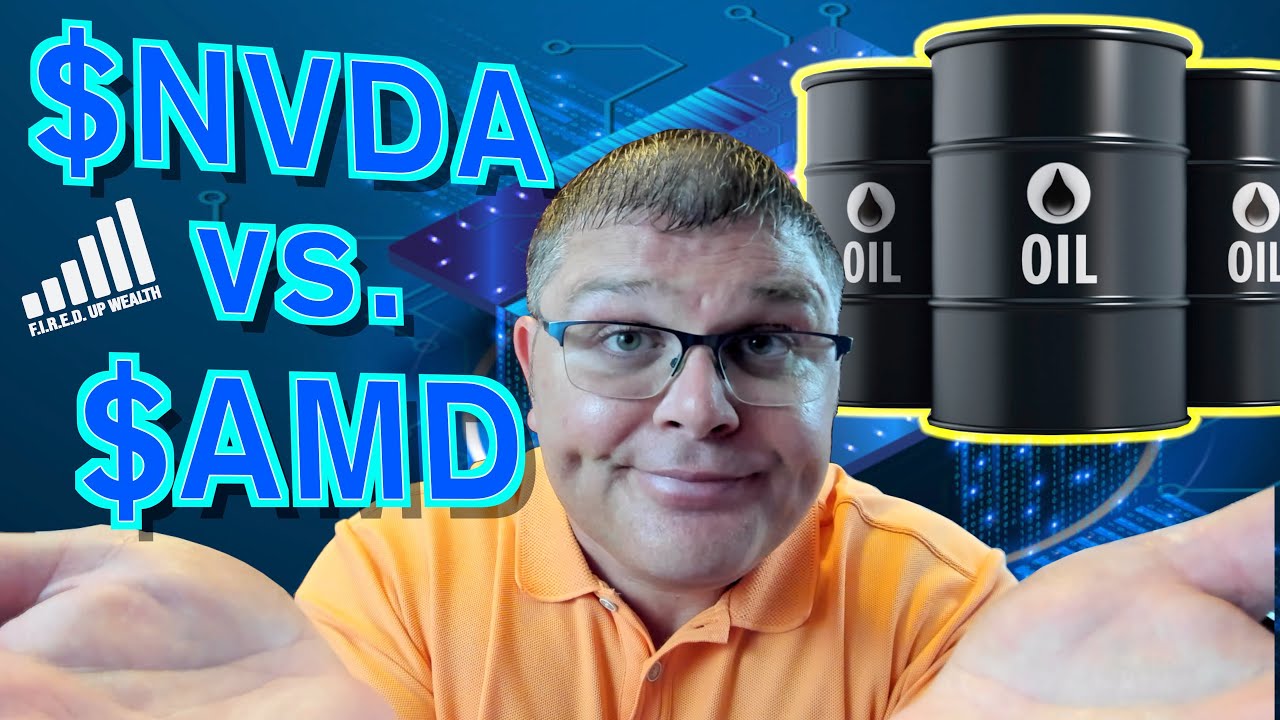⚠️ Join the squad!: https://www.patreon.com/firedupwealth
Here’s my Special Offer for The Motley Fool: https://www.fool.com/firedupwealth
Semiconductors are fueling secular growth trends and disruptive technology. Could a pick-and-shovel stock like NVDA or AMD help your portfolio capture these gains?
Is data the new oil? I have been saying for over a year that data is not the new oil. The reason I say this is because data needs data centers, and data centers need semiconductors. Therefore, semiconductors are the new oil. Think about it for a minute. Consider all of the secular growth trends and disruptive innovations we are experiencing and will continue to experience over the next decade. Here are several to consider:
👉 Data centers
👉 Cloud computing
👉 Cybersecurity
👉 Space exploration
👉 Video gaming
👉 Online gambling
👉 Augmented reality (AR)
👉 Virtual reality (VR)
👉 Mixed reality (MR)
👉 Autonomous driving /autonomous vehicles
👉 Electric vehicles (EVs)
👉 Genomics
👉 Esports
👉 5G
👉 E-commerce
👉 Cryptocurrency / Bitcoin / BTC stock
👉 Artificial intelligence (AI)
👉 Metaverse
👉 Big Data
What do all of these growth trends have in common? They all require semiconductors. So which stocks are the best to own? You could leverage an ETF like VanEck Vectors Semiconductor ETF (NASDAQ: SMH) or iShares Semiconductor ETF (NASDAQ: SOXX), but which companies are best of breed that could help capture the most gains in these disruptive technologies? Perhaps an excellent pick-and-shovel stock exists. Today, I do deep-dive analysis on Nvidia (NASDAQ: NVDA) and Advanced Micro Devices (NASDAQ: AMD). I will explain the growth trends that both companies help fuel, and I’ll provide opinions on which stock is the best long-term investment.
Nvidia reported impressive earnings after the closing bell on Wednesday, and its evident that the company is firing on all cylinders. Nvidia got its big break in 2001, winning the Xbox award and becoming the fastest semiconductor company in history to reach $1 billion in sales. It was co-founded in 1993 by current CEO, Jen-Hsun “Jensen” Huang. Jensen is one of the most influential leaders in Silicon Valley, and his capabilities seem to age like fine wine. People want to work for Nvidia, and the company’s list of credentials grows annually. To provide insight into how impressive Nvidia’s business is, here is a list of recognitions:
👉 Harvard Business Review’s The CEO 100
👉 Fortune’s Best Places to Work
👉 MIT Tech Review’s 50 Smartest Companies
👉 Fortune’s World’s Most Admired Companies
👉 Forbes JUST 100 Best Corporate Citizens
👉 Dow Jones Sustainability Index
What’s mind-blowing to many is that Jensen Huang is actually related to AMD’s CEO, Lisa Su. That’s right, Lisa Su’s grandfather is Jen-Hsun Huang’s uncle. Talk about brainpower running in the family! AMD has a much longer history than Nvidia. In fact, it was founded in 1969 by Walter Jeremiah (Jerry) Sanders, a former executive at Fairchild Semiconductor Corporation, and seven other individuals. AMD’s first product dates all the way back to 1970, but it did not begin producing computer chips until several years later. AMD struggled for many years to compete against behemoth Intel (NASDAQ: INTC), although the tides have recently changed. Intel is a company that arguably failed to innovate, and Lisa Su and her team at AMD were able to capitalize on its complacency. AMD released Ryzen in 2016, which is known as a Zen microprocessor. Speeds blew past Intel by 50% or more in some areas, which changed the game for AMD.
Both Nvidia and AMD have been making strong pushes into data center processors. The CAGR has been impressive, and in my opinion, data centers are the largest potential growth drivers for both companies. Nvidia is in the process of acquiring ARM Holdings from SoftBank (OTC: SFTB.Y) for approximately $40 billion, which would be a game changer in its data center segment. The acquisition is currently held up in the approval process, but Nvidia told investors on their recent earnings call that the deal should get done with time. A denial is certainly a risk for the Nvidia’s stock price, so it’s something to be aware of. AMD is following the same approach by acquiring Xilinx (NASDAQ: XLNX), which is expected to close by the end of 2021 for a similar price tag of approximately $36 billion. Of course, both Arm and Xilinx do more than just data center hardware. For example, Xilinx is a leading designer of field programmable gate arrays (FPGAs), and the acquisition would help AMD combat its arch rival, Intel in this area.
Both acquisitions would be huge for each respective company, but should you buy AMD or Nvidia stock? Please watch this video for additional deep-dive stock analysis and opinions on the semiconductor industry, and specifically, Nvidia stock and AMD stock.
#NVDA #AMD #semiconductors #thenewoil #stocks
Not financial advice.
source



